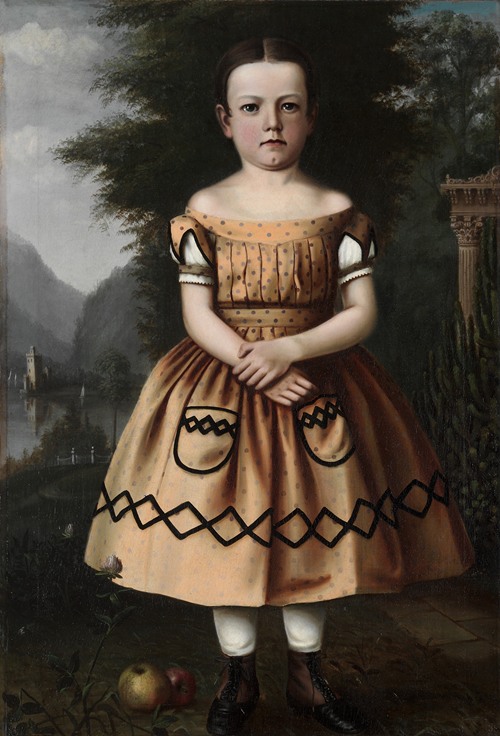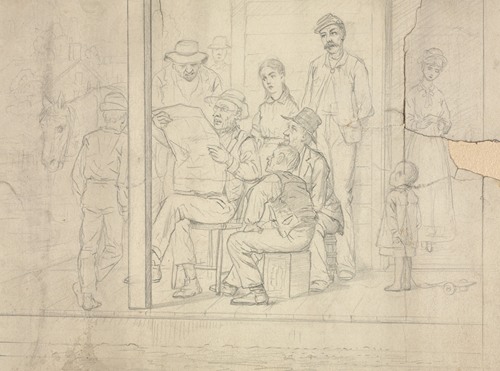

Archibald MacNeal Willard was an American painter who was born and raised in Bedford, Ohio. He was the son of Samuel Willard, the pastor of Bedford Baptist Church.
Willard had an interest in art ever since he was a child and often scribbled on barns and other structures at home. As a young man, Willard moved to Wellington, Ohio and began working for the wagon maker, E.S. Tripp. He began as a basic wagon painter, but eventually was allowed to paint elaborate decorations that were popular at the time. Willard joined the 86th Ohio Infantry in 1863 and fought in the American Civil War, but was not heavily involved. During this time, he painted several scenes from the war.
After the war, Willard created a pair of paintings for Tripp's daughter, Addie, called Pluck and Pluck No. 2. The first of the two features three children being carted by a dog chasing a rabbit, while in the second, the children and their cart have crashed due to their reckless pursuit. These paintings, among earlier sketches, forged a relationship between him and photographer, James F. Ryder. Ryder made much of his money in chromolithography with the outcome of making popular and marketable images for the average household. He saw a potential in Willard to create humorous and cheerful paintings to make profits.
Willard painted The Spirit of '76 about 1875 in Wellington, Ohio, after he saw a holiday parade pass through the town square. Willard also painted three murals in the main hall of the Fayette County courthouse in Washington Court House, Ohio: The Spirit of Electricity, The Spirit of Telegraphy, and The Spirit of the Mail.
Willard is buried in Wellington, Ohio at the Greenwood Cemetery. He is commemorated by a Willard Avenue in his birthplace of Bedford and a Willard Drive in nearby Garfield Heights named after him.

